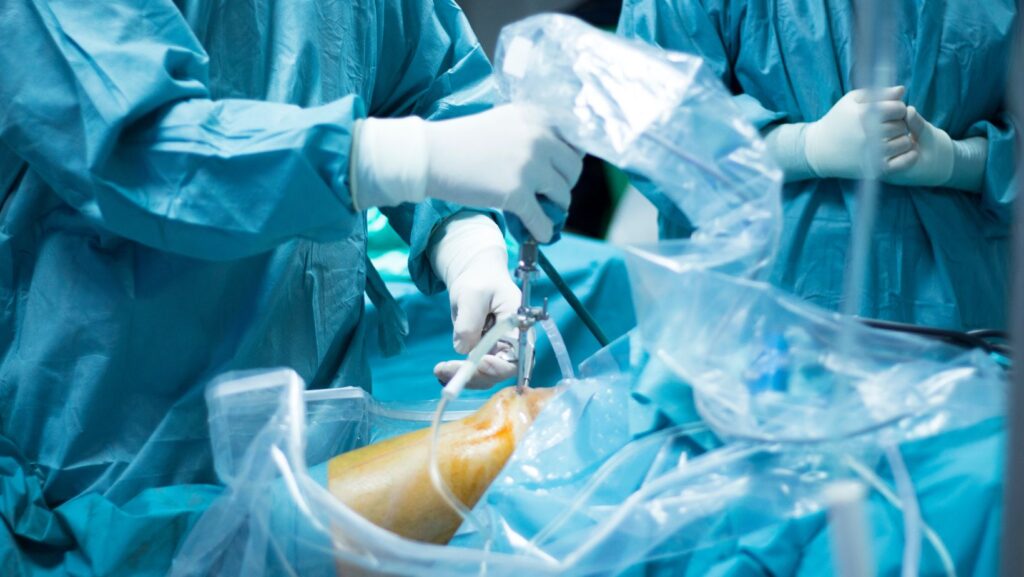Recovering from shoulder surgery requires a carefully planned rehabilitation program to regain strength, mobility and function. Physical therapy and targeted exercises play a vital role in the healing process, helping patients return to their daily activities safely and effectively.
The most effective shoulder rehabilitation exercises include gentle stretching movements in the early stages, followed by progressive strengthening exercises that target the rotator cuff and surrounding muscles. Modern approaches to shoulder rehabilitation with Humero Tech C1 technology have enhanced recovery outcomes through precise movement control and feedback.
The timing and intensity of rehabilitation exercises depend on the type of surgery performed, whether it’s a rotator cuff repair, total shoulder replacement, or arthroscopic procedure. Each patient’s recovery journey is unique, requiring close collaboration with healthcare providers to ensure exercises are appropriate for their specific situation.
Key Takeaways
- Gentle stretching exercises begin the rehabilitation process to restore range of motion
- Progressive strengthening activities build shoulder stability and muscle function
- Customized exercise programs adapt to different surgical procedures and recovery stages
Essential Exercises for Early Recovery
Post-surgical shoulder rehabilitation requires a careful progression from gentle mobility exercises to basic strengthening movements. The key focus is maintaining shoulder flexibility while protecting the surgical site during initial healing.
Gentle Range of Motion Activities
The pendulum exercise forms a crucial starting point. The patient stands and leans forward, allowing the affected arm to hang freely while making small circular motions.
Passive range of motion exercises follow, using the unaffected arm to guide gentle movements. These include assisted shoulder flexion and external rotation while lying down.
Wall walks help restore mobility safely. The patient faces a wall and uses their fingers to gradually “walk” the affected arm upward, working within comfortable limits.
Crossover arm stretches begin once cleared by the physiotherapist, typically after 4-6 weeks. The patient gently pulls the affected arm across their chest.
Initial Strengthening Techniques
Isometric exercises begin around week 6, depending on surgical protocol. The patient performs gentle pushing motions against a wall without moving the joint.
Resistance band exercises start with light bands and focus on internal and external rotation. The elbow stays close to the body during these movements.
Scapular retraction strengthens the shoulder blade muscles. The patient squeezes their shoulder blades together while keeping arms relaxed.
Basic rotator cuff exercises incorporate supraspinatus and biceps training once cleared. These include supported arm raises to 45 degrees using very light weights.
Advanced Strengthening and Conditioning
Advanced rehabilitation exercises focus on building functional strength and stability in the shoulder through targeted resistance training and movement patterns.

These exercises typically begin 8-12 weeks after surgery, once basic mobility has been restored.
Progressive Resistance Training
Resistance band exercises form the foundation of advanced shoulder strengthening. Start with light resistance bands and gradually increase tension as strength improves.
Essential Band Exercises:
- External rotation pulls: 3 sets of 12-15 reps
- Standing rows: 3 sets of 10-12 reps
- Front raises: 2 sets of 10 reps
The triceps and rhomboid muscles require specific attention during this phase. Begin with supported movements to protect the healing rotator cuff.
Targeted Muscle Reinforcement
Rotator cuff strengthening becomes more intensive at this stage. Exercise selection targets each component of the shoulder complex.
Key Exercises:
- Side-lying external rotation
- Prone shoulder extension
- Supported shoulder adduction
Start with bodyweight exercises before adding light weights. Monitor shoulder pain carefully during new movements.
Functional Movement Restoration
This phase integrates strengthening exercises into daily movement patterns. The focus shifts to practical activities that mirror regular tasks.
Movement Progression:
- Controlled reaching movements
- Light overhead activities
- Rotational movements with resistance
The sleeper stretch helps maintain flexibility while building strength. Exercise intensity increases gradually over 4-6 weeks.
Maintain proper form during all movements. Stop any exercise that causes sharp or persistent shoulder pain.
Conclusion
Post-surgical shoulder rehabilitation requires dedication and careful attention to proper exercise form. The most effective recovery programs combine gentle stretching, range-of-motion exercises, and progressive strengthening activities under professional guidance.

Regular communication with healthcare providers ensures exercises remain appropriate for each recovery phase. Success depends on following the prescribed timeline while respecting individual healing rates and pain limits.
